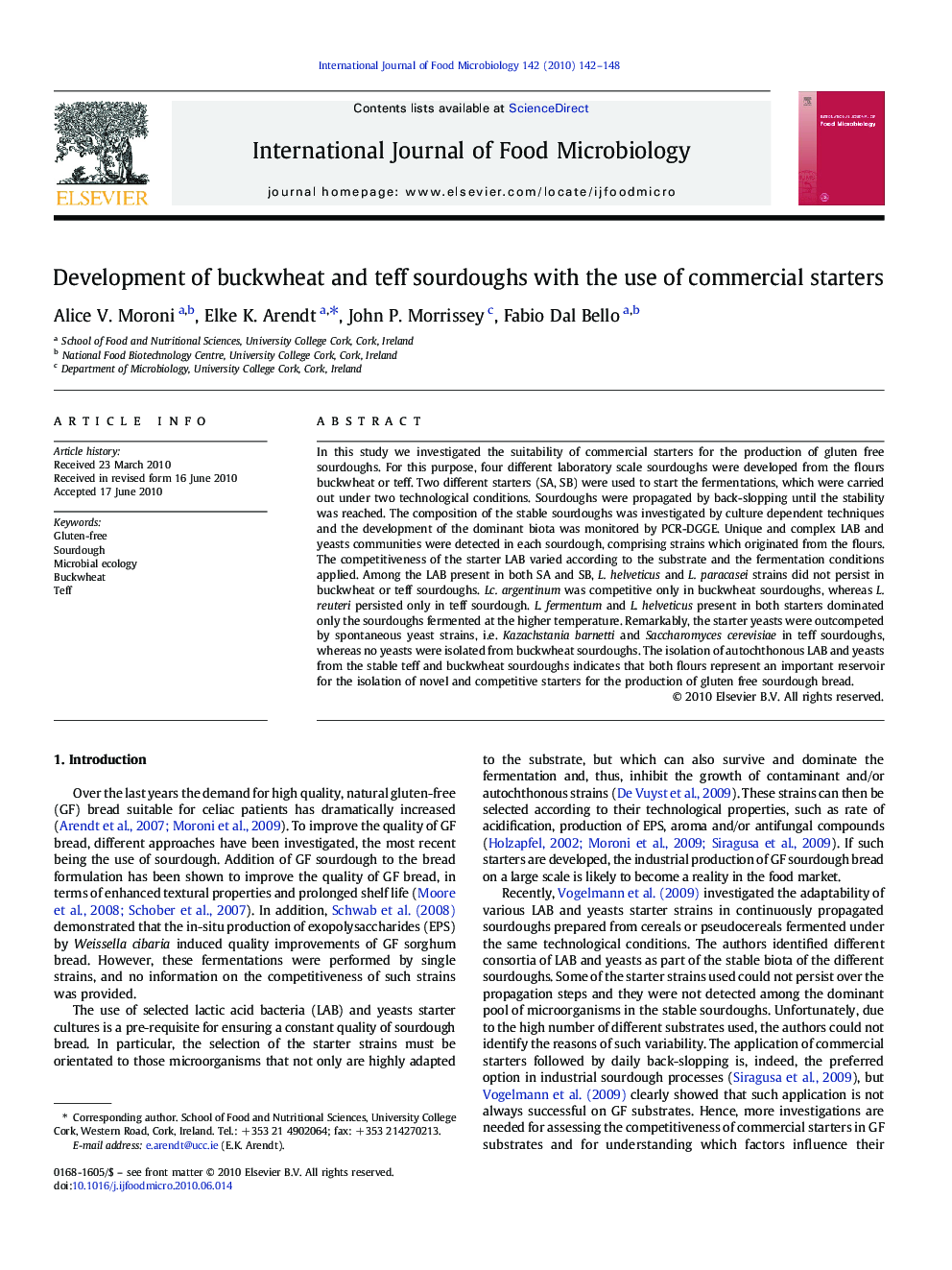| Article ID | Journal | Published Year | Pages | File Type |
|---|---|---|---|---|
| 4368013 | International Journal of Food Microbiology | 2010 | 7 Pages |
In this study we investigated the suitability of commercial starters for the production of gluten free sourdoughs. For this purpose, four different laboratory scale sourdoughs were developed from the flours buckwheat or teff. Two different starters (SA, SB) were used to start the fermentations, which were carried out under two technological conditions. Sourdoughs were propagated by back-slopping until the stability was reached. The composition of the stable sourdoughs was investigated by culture dependent techniques and the development of the dominant biota was monitored by PCR-DGGE. Unique and complex LAB and yeasts communities were detected in each sourdough, comprising strains which originated from the flours. The competitiveness of the starter LAB varied according to the substrate and the fermentation conditions applied. Among the LAB present in both SA and SB, L. helveticus and L. paracasei strains did not persist in buckwheat or teff sourdoughs. Lc. argentinum was competitive only in buckwheat sourdoughs, whereas L. reuteri persisted only in teff sourdough. L. fermentum and L. helveticus present in both starters dominated only the sourdoughs fermented at the higher temperature. Remarkably, the starter yeasts were outcompeted by spontaneous yeast strains, i.e. Kazachstania barnetti and Saccharomyces cerevisiae in teff sourdoughs, whereas no yeasts were isolated from buckwheat sourdoughs. The isolation of autochthonous LAB and yeasts from the stable teff and buckwheat sourdoughs indicates that both flours represent an important reservoir for the isolation of novel and competitive starters for the production of gluten free sourdough bread.
